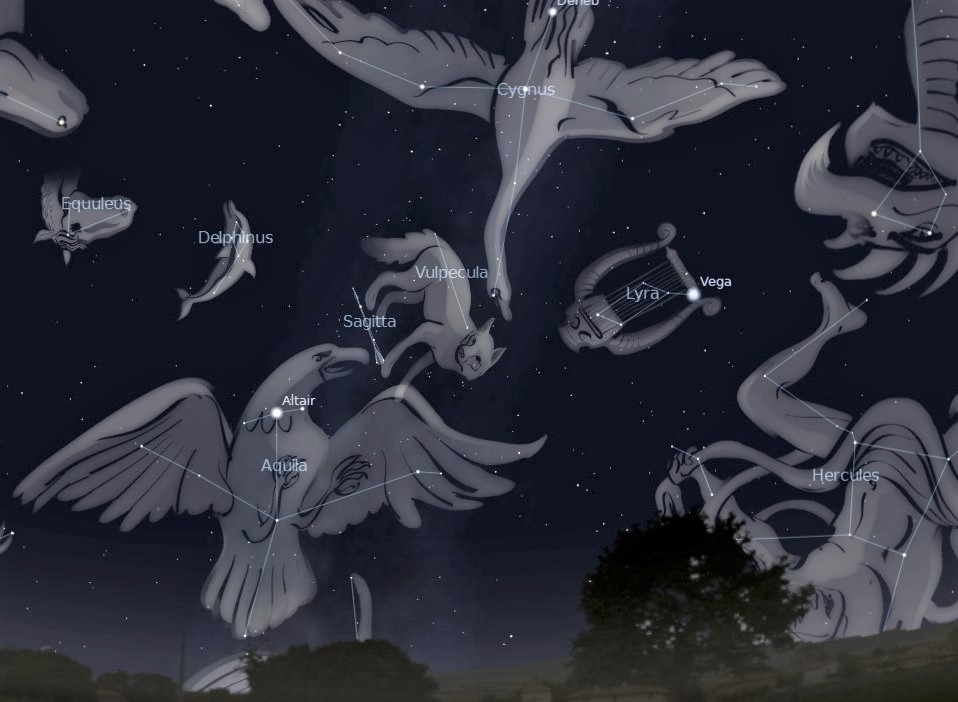This Week’s Sky at a Glance, 2020 November 21 – 28
~by Curt Nason
Like Nate the pirate in the Overboard comics, some people do not want to let go of summer. I usually don’t succumb to the cold right away, waiting for -10 C before my winter coat gets worn regularly. But you have to accept the inevitable, so around 8:30 pm this week don your coat and imagination to say goodbye to the summer constellations as they sink below the western horizon.
The first thing you might notice is the Summer Triangle, balanced on Altair and tipping to the right. Aquila the Eagle, with Altair at its head, is flapping furiously and futilely to stay above ground, a battle it will lose over two hours. To its right, Hercules is diving head first, hopefully into a lake. Between them, if you are in the country, you might see the haze of the Milky Way spilling over the ground, perhaps to become frost. Four smaller constellations form a line above Altair, highlighted by Lyra to the right with its brilliant star Vega. Foxy Vulpecula, Sagitta the Arrow and eye-catching Delphinus the Dolphin are balanced across the eagle’s wingspan. While you are at it, try for the triangular head of Equuleus the Little Horse, who leads his big brother Pegasus by a nose.
This Week in the Solar System
Saturday’s sunrise in Moncton is at 7:28 am and sunset will occur at 4:40 pm, giving 9 hours, 12 minutes of daylight (7:31 am and 4:48 pm in Saint John). Next Saturday the Sun will rise at 7:37 am and set at 4:36 pm, giving 8 hours, 59 minutes of daylight (7:40 am and 4:44 pm in Saint John).
The Moon is at first quarter after midnight this Saturday night (12:45 Sunday morning), and it passes below Mars in the waxing gibbous phase on Wednesday. Jupiter creeps to within three degrees of Saturn over the week, setting around 8:30 pm midweek. Mars resembles a garnet gem among the dim stars of Pisces throughout the evening. Mercury remains visible in the morning sky, rising more than 75 minutes before sunrise to the lower left of Venus. The extended coma of comet Comet C/2020 M3 ATLAS was a tough object to spot with a telescope in a suburban sky last weekend, but I also spotted C/2020 S3 Erasmus with binoculars as it passed through the constellation Corvus the Crow in the morning. By late week Erasmus will be directly below Spica and to the right of Venus.
With astronomy meetings and outreach activities on hold, you can watch the local Sunday Night Astronomy Show at 8 pm and view archived shows.
Questions? Contact Curt Nason.

